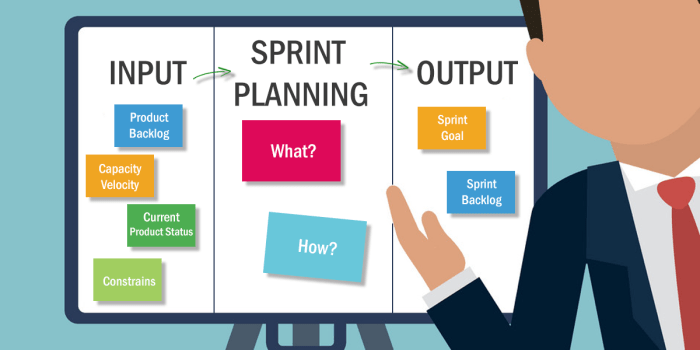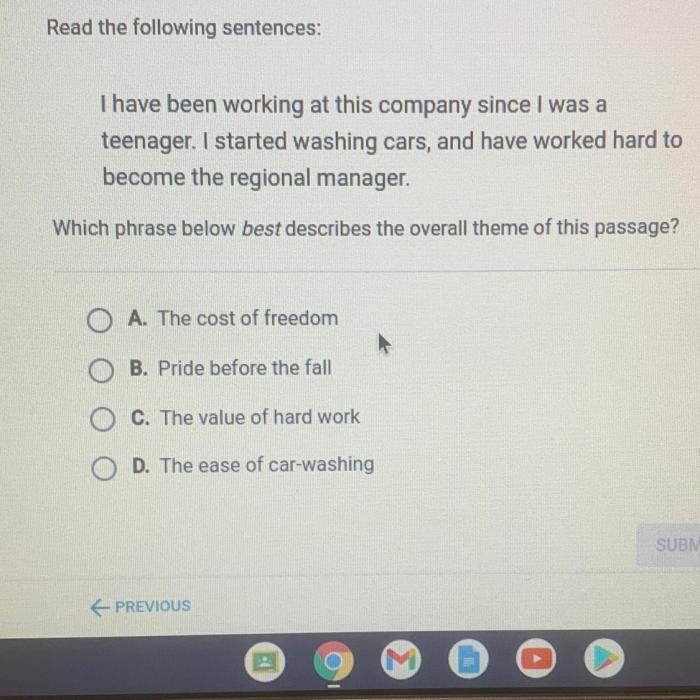Which answer best describes the topics covered in sprint planning? This question lies at the heart of effective Agile development, as sprint planning serves as the cornerstone for successful project execution. By understanding the key elements and processes involved in sprint planning, teams can optimize their workflow, enhance collaboration, and deliver exceptional results.
Sprint planning is a crucial practice in Agile methodologies, providing a structured approach to define the scope, goals, and tasks for an upcoming sprint. It involves a collaborative effort among team members, including the Product Owner, Scrum Master, and development team, to ensure alignment and commitment.
Through sprint planning, teams establish a clear understanding of the work to be completed, fostering a sense of ownership and accountability.
Sprint Planning Overview

Sprint planning is a crucial event in Agile development that sets the stage for the upcoming sprint. It involves the team collaboratively defining the sprint goal, identifying tasks, and estimating effort to achieve the goal within the sprint time frame.
Effective sprint planning helps align the team’s efforts, promotes transparency, and ensures that the team is working towards a shared understanding of the sprint objectives.
Participants and Roles
- Product Owner:Defines the sprint goal, prioritizes the backlog, and represents the stakeholders’ interests.
- Scrum Master:Facilitates the sprint planning session, ensures team engagement, and removes impediments.
- Development Team:Estimates the effort and complexity of tasks, commits to the sprint backlog, and collaborates to deliver the sprint goal.
Agenda and Structure
Sprint planning typically follows a structured agenda:
- Review of the sprint goal and objectives
- Backlog grooming and prioritization
- Sprint estimation and planning
- Task assignment and accountability
Backlog Refinement and Prioritization
Backlog refinement involves reviewing, clarifying, and prioritizing the product backlog items to determine which will be included in the sprint.
User stories and requirements are groomed to ensure they are well-defined, understandable, and meet the INVEST criteria (Independent, Negotiable, Valuable, Estimable, Small, Testable).
Sprint Goal and Objectives
The sprint goal is a concise statement that articulates the purpose and expected outcome of the sprint.
It aligns with the overall project objectives and provides a clear focus for the team’s efforts during the sprint.
Sprint Backlog Creation, Which answer best describes the topics covered in sprint planning
The sprint backlog is a list of user stories and tasks that the team commits to completing during the sprint.
User stories are selected from the refined backlog and committed to by the team based on their capacity and the sprint goal.
Sprint Estimation and Planning
Sprint estimation involves estimating the effort and complexity of tasks using techniques such as story points or ideal days.
The team collectively estimates the effort required to complete each task, taking into account factors such as task size, complexity, and dependencies.
Task Assignment and Accountability
Tasks are assigned to team members based on their skills and availability.
Accountability is established through clear task ownership and regular progress updates during the sprint.
Sprint Review and Retrospective
The sprint review is a meeting held at the end of the sprint to demonstrate the completed work and gather feedback.
The sprint retrospective is a meeting held after the sprint review to reflect on the sprint process, identify areas for improvement, and plan for the next sprint.
Expert Answers: Which Answer Best Describes The Topics Covered In Sprint Planning
What is the primary objective of sprint planning?
The primary objective of sprint planning is to define the scope, goals, and tasks for an upcoming sprint, ensuring alignment and commitment among team members.
Who are the typical participants involved in sprint planning sessions?
Typical participants in sprint planning sessions include the Product Owner, Scrum Master, and development team.
What is the role of the Product Owner in sprint planning?
The Product Owner is responsible for defining the product vision, prioritizing the product backlog, and ensuring that the sprint goals align with the overall project objectives.


